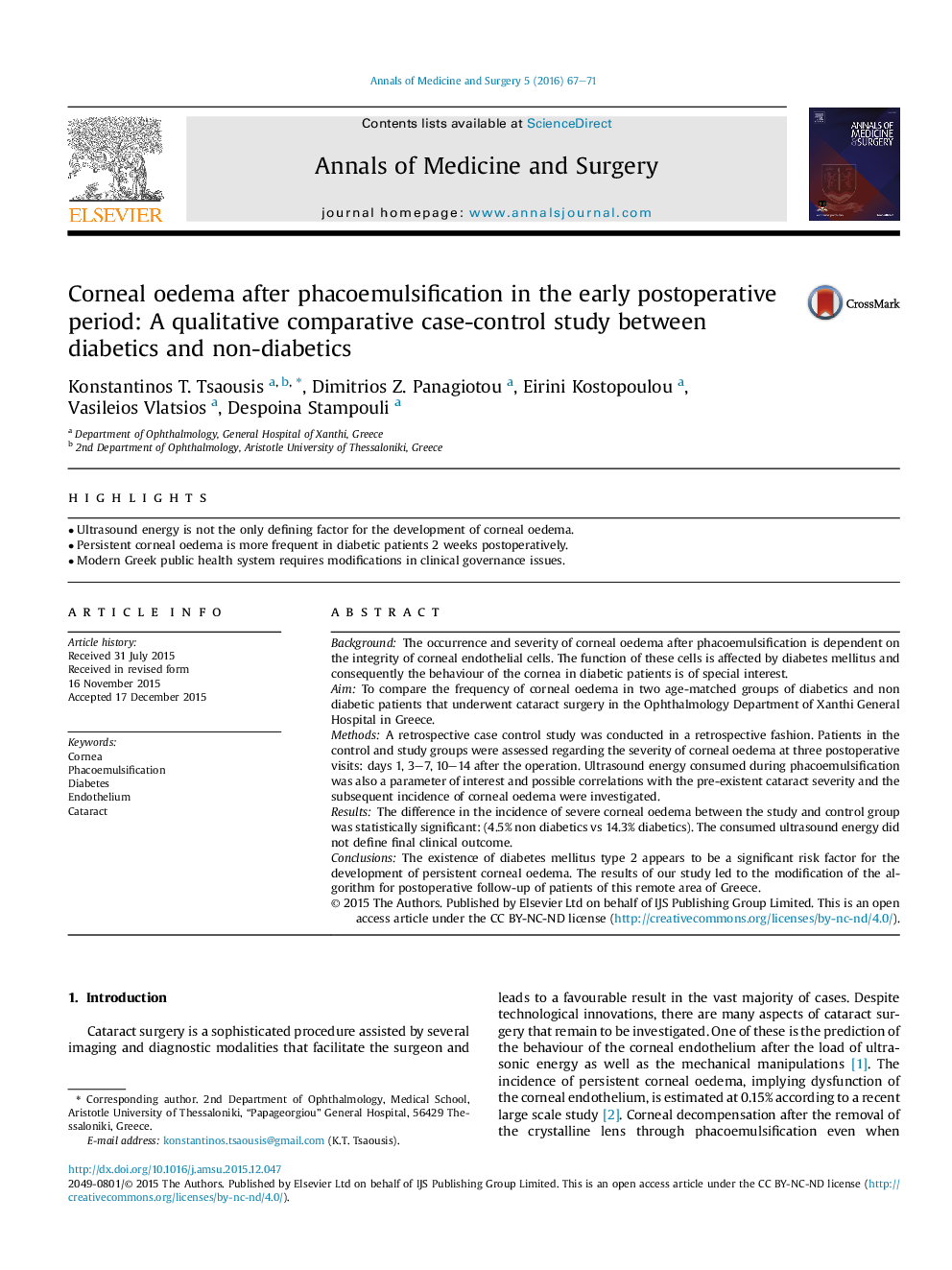| Article ID | Journal | Published Year | Pages | File Type |
|---|---|---|---|---|
| 4195294 | Annals of Medicine and Surgery | 2016 | 5 Pages |
•Ultrasound energy is not the only defining factor for the development of corneal oedema.•Persistent corneal oedema is more frequent in diabetic patients 2 weeks postoperatively.•Modern Greek public health system requires modifications in clinical governance issues.
BackgroundThe occurrence and severity of corneal oedema after phacoemulsification is dependent on the integrity of corneal endothelial cells. The function of these cells is affected by diabetes mellitus and consequently the behaviour of the cornea in diabetic patients is of special interest.AimTo compare the frequency of corneal oedema in two age-matched groups of diabetics and non diabetic patients that underwent cataract surgery in the Ophthalmology Department of Xanthi General Hospital in Greece.MethodsA retrospective case control study was conducted in a retrospective fashion. Patients in the control and study groups were assessed regarding the severity of corneal oedema at three postoperative visits: days 1, 3–7, 10–14 after the operation. Ultrasound energy consumed during phacoemulsification was also a parameter of interest and possible correlations with the pre-existent cataract severity and the subsequent incidence of corneal oedema were investigated.ResultsThe difference in the incidence of severe corneal oedema between the study and control group was statistically significant: (4.5% non diabetics vs 14.3% diabetics). The consumed ultrasound energy did not define final clinical outcome.ConclusionsThe existence of diabetes mellitus type 2 appears to be a significant risk factor for the development of persistent corneal oedema. The results of our study led to the modification of the algorithm for postoperative follow-up of patients of this remote area of Greece.
